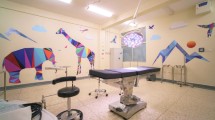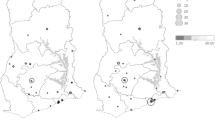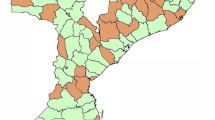Abstract
Background
Surgery and perioperative care have been neglected in the arena of global health despite evidence of cost-effectiveness and the growing, substantial burden of surgical conditions. Various approaches to address the surgical disease crisis have been reported. This article describes the strategy of Global Partners in Anesthesia and Surgery (GPAS), an academically based, capacity-building collaboration between North American and Ugandan teaching institutions.
Methods
The collaboration’s projects shift away from the trainee exchange, equipment donation, and clinical service delivery models. Instead, it focuses on three locally identified objectives to improve surgical and perioperative care capacity in Uganda: workforce expansion, research, collaboration.
Results
Recruitment programs from 2007 to 2011 helped increase the number of surgery and anesthesia trainees at Mulago Hospital (Kampala, Uganda) from 20 to 40 and 2 to 19, respectively. All sponsored trainees successfully graduated and remained in the region. Postgraduate academic positions were created and filled to promote workforce retention. A local research agenda was developed, more than 15 collaborative, peer-reviewed papers have been published, and the first competitive research grant for a principal investigator in the Department of Surgery at Mulago was obtained. A local projects coordinator position and an annual conference were created and jointly funded by partnering international efforts to promote collaboration.
Conclusions
Sub-Saharan Africa has profound unmet needs in surgery and perioperative care. This academically based model helped increase recruitment of trainees, expanded local research, and strengthened stakeholder collaboration in Uganda. Further analysis is underway to determine the impact on surgical disease burden and other important outcome measures.

Similar content being viewed by others
References
Jamison D, Breman J, Measham A (eds) (2006) Disease control priorities in developing countries, 2nd edn. Oxford University Press, New York
WHO (2004) The global burden of disease: 2004 update. http://www.who.int/healthinfo/global_burden_disease/2004_report_update/en/index.html. Accessed 16 Feb 2011
WHO (2012) Projections of mortality and burden of disease, 2004–2030. http://www.who.int/healthinfo/global_burden_disease/projections/en/index.html. Accessed 19 July 2012
Kanter SL (2008) Global health is more important in a smaller world. Acad Med 83:115–116
Drain PK, Primack A, Hunt DD et al (2007) Global health in medical education: a call for more training and opportunities. Acad Med 82:226–230
Crump JA, Sugarman J (2008) Ethical considerations for short-term experiences by trainees in global health. JAMA 300:1456–1458
Anonymous (2011) Consortium of Universities for global health. http://www.cugh.org/. Accessed 5 Dec 2011
Gosselin RA, Gyamfi YA, Contini S (2011) Challenges of meeting surgical needs in the developing world. World J Surg 35:258–261
McQueen KAK, Hyder JA, Taira BR et al (2010) The provision of surgical care by international organizations in developing countries: a preliminary report. World J Surg 34:397–402
Qureshi JS, Samuel J, Lee C et al (2011) Surgery and global public health: the UNC-Malawi surgical initiative as a model for sustainable collaboration. World J Surg 35:17–21
Anonymous (2012) CNIS—Canadian network for international surgery. http://www.cnis.ca/. Accessed 18 Jan 2012
Anonymous (2012) IVUmed. http://www.ivumed.org/. Accessed 18 Jan 2012
Anonymous (2011) SIHS programs—surgeons overseas. http://www.humanitariansurgery.org/. Accessed 4 Dec 2011
Welling DR, Ryan JM, Burris DG et al (2010) Seven sins of humanitarian medicine. World J Surg 34:466–470
Anonymous (2012) World Bank Data: GNI per capita. http://data.worldbank.org/indicator/NY.GNP.PCAP.CD. Accessed 23 Jan 2012
Ozgediz D, Wang J, Jayaraman S et al (2008) Surgical training and global health: initial results of a 5-year partnership with a surgical training program in a low-income country. Arch Surg 143:860–865 discussion 865
Riviello R, Ozgediz D, Hsia RY et al (2010) Role of collaborative academic partnerships in surgical training, education, and provision. World J Surg 34:459–465
Galukande M, Kijjambu S, Luboga S (2006) Improving the recruitment of surgical trainees and training of surgeons in Uganda. East Central Afr J Surg 11:11–24
Dubowitz G, Detlefs S, McQueen KAK (2010) Global anesthesia workforce crisis: a preliminary survey revealing shortages contributing to undesirable outcomes and unsafe practices. World J Surg 34:438–444
Anonymous (2011) NGOs working to reduce poverty. http://www.independent.co.ug/supplement/role-of-ngos-in-poverty-eradication/1581-ngos-working-to-reduce-poverty. Accessed 4 Dec 2011
Anonymous (2012) Paris declaration and Accra agenda for action. http://www.oecd.org/document/18/0,3746,en_2649_3236398_35401554_1_1_1_1,00.html. Accessed 16 Jan 2012
Holm JD, Malete L (2010) Nine problems that hinder partnerships in Africa: the chronicle of higher education. http://chronicle.com/article/Nine-Problems-That-Hinder/65892/. Accessed 17 Feb 2011
Anonymous (2012) Uganda anaesthesia fellowship programme—AAGBI. http://www.aagbi.org/international/overseas-anaesthesia-fund/uganda-anaesthesia-fellowship-programme. Accessed 1 Feb 2012
Anonymous (2011) GPAS—global partners in anesthesia and surgery. http://www.globalpas.org/projects/capacity-building/scholarships/. Accessed 20 Nov 2012
Anonymous (2011) Intensive care uganda. http://intensivecareuganda.com/about.html. Accessed 8 Dec 2011
Luboga S, Macfarlane SB, von Schreeb J et al (2009) Increasing access to surgical services in sub-Saharan Africa: priorities for national and international agencies recommended by the Bellagio Essential Surgery Group. PLoS Med 6:e1000200
Luboga S, Galukande M, Mabweijano J et al (2010) Key aspects of health policy development to improve surgical services in Uganda. World J Surg 34:2511–2517
Jayaraman S, Mabweijano JR, Lipnick MS et al (2009) Current patterns of prehospital trauma care in Kampala, Uganda and the feasibility of a lay-first-responder training program. World J Surg 33:2512–2521
Galukande M, von Schreeb J, Wladis A et al (2010) Essential surgery at the district hospital: a retrospective descriptive analysis in three African countries. PLoS Med 7:e1000243
Luboga S, Galukande M, Ozgediz D (2009) Recasting the role of the surgeon in Uganda: a proposal to maximize the impact of surgery on public health. Trop Med Int Health 14:604–608
Jayaraman S, Mabweijano JR, Lipnick MS et al (2009) First things first: effectiveness and scalability of a basic prehospital trauma care program for lay first-responders in Kampala. Uganda. PLoS One 4:e6955
Fualal J, Moses W, Jayaraman SP et al (2012) Characterizing thyroid disease and identifying barriers to care and treatment in Uganda. World J Endoc Surg 4(2):47–53
Jayaraman S, Ozgediz D, Miyamoto J et al (2011) Disparities in injury mortality between Uganda and the United States: comparative analysis of a neglected disease. World J Surg 35:505–511
Bhalla K, Harrison J, Abraham J et al (2009) Data sources for improving estimates of the global burden of injuries: call for contributors. PLoS Med 6:e1
Kimuli T (2011) Blood and body fluid exposures among surgeons in Mulago Hospital. East Central Afr J Surg 16:86–93
Anonymous (2012) GPAS—Global Partners in Anesthesia and Surgery. http://www.globalpas.org/projects/harmonization/calendar/. Accessed 20 Nov 2012
Ozgediz D, Galukande M, Mabweijano J et al (2008) The neglect of the global surgical workforce: experience and evidence from Uganda. World J Surg 32:1208–1215
Scheffler RM, Liu JX, Kinfu Y et al (2008) Forecasting the global shortage of physicians: an economic- and needs-based approach. Bull World Health Organ 86:516–523B
Mullan F, Frehywot S, Omaswa F et al (2011) Medical schools in sub-Saharan Africa. Lancet 377:1113–1121
Corlew S, Fan VY (2011) A model for building capacity in international plastic surgery. Ann Plast Surg 67:568–570
Deckelbaum DL, Ntakiyiruta G, Liberman AS, et al (2011) Augmenting surgical capacity in resource-limited settings. Lancet. doi:10.1016/S0140-6736(11)61090-8. Also: Lancet 380:713–714, 2012
Kingham TP, Price R, Casey K, et al (2011) Beyond volunteerism: augmenting surgical care in resource-limited settings. http://www.facs.org/fellows_info/bulletin/2011/jul11bullet.html
Choo S, Perry H, Hesse AAJ et al (2010) Assessment of capacity for surgery, obstetrics and anaesthesia in 17 Ghanaian hospitals using a WHO assessment tool. Trop Med Int Health 15:1109–1115
Newton M, Bird P (2010) Impact of parallel anesthesia and surgical provider training in sub-Saharan Africa: a model for a resource-poor setting. World J Surg 34:445–452
Mills EJ, Kanters S, Hagopian A et al (2011) The financial cost of doctors emigrating from sub-Saharan Africa: human capital analysis. BMJ 343:d7031
Luboga S, Hagopian A, Ndiku J et al (2011) Satisfaction, motivation, and intent to stay among Ugandan physicians: a survey from 18 national hospitals. Int J Health Plann Manage 26:2–17
Mullan F, Frehywot S, Omaswa F et al (2010) Medical schools in sub-Saharan Africa. Lancet. doi: 10.1016/S0140-6736(10)61961-7. Also: Lancet 377:1113–1121, 2011
Howie SRC, Hill SE, Peel D et al (2008) Beyond good intentions: lessons on equipment donation from an African hospital. Bull World Health Organ 86:52–56
Anonymous (2000) Guidelines for health care equipment donations. http://www.who.int/hac/crises/hti/appeal/medical_supplies/en/. Accessed 5 May 2012
Petroze R, Mody G, Ntaganda E (2011) International academic collaboration in surgical development: the inaugural meeting of the strengthening Rwanda surgery initiative
Kushner AL, Kyamanywa P, Adisa CA et al (2011) Editorial policy on co-authorship of articles from low- and middle-income countries. World J Surg 35:2367–2368
Khambaty FM, Ayas HM, Mezghebe HM (2010) Surgery in the Horn of Africa: a 1-year experience of an American-sponsored surgical residency in Eritrea. Arch Surg 145:749–752
Haglund MM, Kiryabwire J, Parker S et al (2011) Surgical capacity building in Uganda through twinning, technology, and training camps. World J Surg 35:1175–1182
Anonymous (2011) IGOT—Institute for Global Orthopaedics and Traumatology. http://www.globalorthopaedics.org/. Accessed 4 Dec 2011
Anderson FWJ, Mutchnick I, Kwawukume EY et al (2007) Who will be there when women deliver? Assuring retention of obstetric providers. Obstet Gynecol 110:1012–1016
Klufio CA, Kwawukume EY, Danso KA et al (2003) Ghana postgraduate obstetrics/gynecology collaborative residency training program: success story and model for Africa. Am J Obstet Gynecol 189:692–696
Pollock JD, Love TP, Steffes BC et al (2011) Is it possible to train surgeons for rural Africa? A report of a successful international program. World J Surg 35:493–499
Bermudez LE, Lizarraga AK (2011) Operation smile: how to measure its success. Ann Plast Surg 67:205–208
Maki J, Qualls M, White B et al (2008) Health impact assessment and short-term medical missions: a methods study to evaluate quality of care. BMC Health Serv Res 8:121
Zachariah R, Tayler-Smith K, Ngamvithayapong-Yana J et al (2010) The published research paper: is it an important indicator of successful operational research at programme level? Trop Med Int Health 15:1274–1277
Zachariah R, Harries AD, Ishikawa N et al (2009) Operational research in low-income countries: what, why, and how? Lancet Infect Dis 9:711–717
Diallo K, Zurn P, Gupta N et al (2003) Monitoring and evaluation of human resources for health: an international perspective. Hum Resour Health 1:3
Simister N, Smith R (2010) Monitoring and evaluating capacity building: is it really that difficult? Available at: http://www.intrac.org/resources.php?action=resource&id=677. Accessed 5 May 2012
Chu K, Rosseel P, Gielis P et al (2009) Surgical task shifting in sub-Saharan Africa. PLoS Med 6:e1000078
Crane J (2011) Scrambling for Africa? Universities and global health. Lancet 377:1388–1390
Collins FS, Glass RI, Whitescarver J et al (2010) Developing health workforce capacity in Africa. Science 330:1324–1325
Acknowledgments
We thank the Mulago Foundation, Grey Family Foundation, Makerere College of Health Sciences, Dean Sewankambo, University of British Columbia, The Laura Case Trust, Amalthea Trust, AAGBI, The Departments of Surgery, Obstetrics, and Anesthesia at UCSF, Ian Metzler, Ikeda Keita, John Okuonzi, Felicia Lester, Robert Wangoda, John Sekabira, GPAS Scholars and Senior Scholars, Sarah Nakitto, Monica Kabagambe, Medical Teams International, Nathan O’Hara, Jane Fualal, Kayvan Roayaie, Rochelle Dicker, Tony Roche, Stephen Kijambu, Sister Margaret Ajiko, Moses Galukande, and Piotr Blachut.
Author information
Authors and Affiliations
Corresponding author
Rights and permissions
About this article
Cite this article
Lipnick, M., Mijumbi, C., Dubowitz, G. et al. Surgery and Anesthesia Capacity-Building in Resource-Poor Settings: Description of an Ongoing Academic Partnership in Uganda. World J Surg 37, 488–497 (2013). https://doi.org/10.1007/s00268-012-1848-x
Published:
Issue Date:
DOI: https://doi.org/10.1007/s00268-012-1848-x




